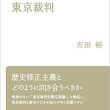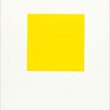非言語情報の「痛み」
言語を持たない赤ん坊でも痛みを感じ、母親はその訴えを聞き分けられる。Pain-o-Meter Scientists have long known that pain’s intensity is difficult to measure because people experience pain differently.(1) In the case of 17-year-old Sarah Taylor, doctors struggled to understand her levels of pain from childhood arthritis and fibromyalgia.(2) “It’s really hard when people can’t see how much pain you’re in, because they have to take your word on it and sometimes, they don’t quite believe you,” she said.(3) Some scientists working with Taylor are now trying to develop an objective way to measure pain.(4) They are measuring the reaction inside Taylor’s eyes when she reports pain and when she does not.(5) Dr. Julia Finkel is with Children’s National Medical Center in Washington. She invented an experimental device that is being used with Taylor.(6) Doctors have traditionally asked patients to rate their pain on a scale of one to 10. That can be a problem, however.(7) Medical workers can estimate babies’ pain from their cries and movements.(8) But the pain one person rates as seven, for example, might be four to someone who is more tolerant of pain.(9) These differences make it difficult to show how well new medicines to ease pain really work.(10) The question is especially important because of the increasing and deadly misuse of painkilling drugs in the United States.(11) Taylor said, “It’s frustrating to be in pain and you have to wait like six weeks, two months, to see if the drug’s working.”(12) She uses a combination of medications, acupuncture and exercise to ease pain.(13) Dr. Francis Collins is the director of the National Institutes of Health (NIH).(14) His agency is trying to develop what he calls a “pain-o-meter.”(15) The goal is to be able to find out what kind of drug will be most effective for a patient.(16) David Thomas is with NIH’s National Institute on Drug Abuse.(17) He noted, “We’re not creating a lie detector for pain.” He said, “We do not want to lose the patient voice.”(18) Now, scientists around the country are using brain studies, pupil reactions and other methods in research supported by the NIH.(19) “There won’t be a single signature of pain,” Thomas said. He predicted that several different methods will create “something of a fingerprint of pain.”(20) NIH estimates that 25 million people in the U.S. experience daily pain.(21) Sarah Taylor of Potomac, Maryland, is one of them. She was very young when, her joints started aching.(22) She had bad headaches and swelling of the spine.(23) Then, two years ago, she was found to have fibromyalgia, a condition of pain all over the body.(24) Recently, a researcher worked with Taylor using the pupil-tracking device attached to a smartphone.(25) Dr. Finkel directs pain research at the Sheikh Zayed Institute for Pediatric Surgical Innovation at Children’s National Hospital.(26) She noted that the eye is a window to pain centers in the brain. She said that some nerves send pain signals that affect muscles of the pupils.(27) Finkel’s device follows the pupils’ reactions to light and other stimulation that is not pain.(28) The goal is to find differences that might permit the measurement of the intensity of pain.(29) Finkel also said the presence of some kinds of drugs can be detected by other changes in a resting pupil.(30) In December, the Food and Drug Administration announced it would help a company that Finkel started, called AlgometRx, develop a device to carry out fast drug tests.(31) Other scientists want to look deeper – into the brain.(32) Scientists with Harvard and Massachusetts General Hospital have found that brain images using an MRI can show changes in the brain linked to pain.(33) They suggest that patterns of inflammation in the brain can be linked to fibromyalgia and back pain.(34) Other researchers are studying the brain waves linked to pain and how areas of the brain “light up” with different kinds of pain.(35) The NIH is interested in discovering the biological markers that let some people recover from severe pain while others have long-term pain.(36) I’m Mario Ritter Jr.(37)
科学者は長い間痛みの強さを測定するのが難しいことを知っていました。人々は痛みが異なるためです。1歳のサラ・テイラーの場合、医師は小児関節炎と線維筋痛による痛みのレベルを理解するのに苦労しました。あなたがどれほどの痛みを感じているかを人々が理解できないとき、それは本当に難しいです。なぜなら、彼らはあなたの言葉を受け入れなくてはならず、時にはあなたをまったく信じていないからです。」と彼女は言いました。現在、痛みを測定する客観的な方法を開発しようとしています。(4)痛みを報告するときとしないときのテイラーの目の内側の反応を測定しています。(5)ジュリア・フィンケル博士はワシントンの小児国立医療センターにいます。彼女は、テイラーで使用されている実験装置を発明しました。(6)医師は伝統的に、患者に痛みを1から10のスケールで評価するように求めてきました。しかし、それは問題になる可能性があります。(7)医療従事者は、赤ちゃんの痛みを推定できます(8)しかし、たとえば、ある人が7と評価する痛みは、痛みに耐えられる人にとっては4である可能性があります。(9)これらの違いにより、痛みを和らげる新薬がどれほど優れているかを示すことが難しくなります。 (10)米国では鎮痛剤の誤用が増加しており、致命的であるため、この質問は特に重要です。(11)テイラーは次のように述べています。「痛みに苦しんでおり、6週間、2か月ほど待たなければならない(12)彼女は薬、鍼治療、運動を組み合わせて痛みを和らげています。(13)フランシス・コリンズ博士は国立衛生研究所(NIH)のディレクターです。(14)代理店は彼が「痛みメーター」と呼んでいるものを開発しようとしています。(15)目標は(16)デビッドトーマスはNIHの国立薬物乱用研究所に所属しています。(17)彼は、「痛みの嘘発見器を作成しているわけではありません。」彼は、「私たちは患者の声を失いたくない」と言った。(18)現在、全国の科学者は、NIHが支援する研究で脳研究、瞳孔反応、および他の方法を使用している。単一の痛みのサインです」とトーマスは言いました。彼は、いくつかの異なる方法が「痛みの指紋のようなもの」を生み出すと予測しました。(20)NIHは、米国の2,500万人が毎日痛みを経験していると推定しています。(21)メリーランド州ポトマックのサラ・テイラーもその一人です。関節が痛むようになったとき、彼女は非常に若かった。(22)彼女はひどい頭痛と背骨の腫れを持っていた。(23)それから、2年前、彼女は体全体の痛みの状態である線維筋痛症を持っていることが分かった。 24)最近、研究者は、スマートフォンに取り付けられた瞳孔追跡デバイスを使用してテイラーと協力しました。(25)フィンケル博士は、小児国立病院の小児外科革新のためのシェイクザイード研究所で疼痛研究を指揮しています。目は脳の痛みの中枢への窓です。彼女は、いくつかの神経は、瞳孔の筋肉に影響を与える痛みの信号を送ると述べた。(27)フィンケルのデバイスは、光や痛みではないその他の刺激に対する瞳孔の反応を追跡する。(28)目標は、 (29)フィンケルは、ある種の薬物の存在は安静時の瞳孔の他の変化によっても検出できると述べた。(30)12月、食品医薬品局は、フィンケルが設立した会社を支援すると発表した。 AlgometRxと呼ばれる、高速薬物検査を実行するためのデバイスを開発します。(31)他の科学者は、脳をより深く見たいと考えています。(32)ハーバードおよびマサチューセッツ総合病院の科学者は、MRIを使用した脳画像が脳は痛みに関連している。(33)脳の炎症のパターンは線維筋痛症と腰痛に関連している可能性があることを示唆している。(34)他の研究者は、痛みに関連する脳波と脳の領域がどのように「明るくなる」かを研究している違う気痛みの種類。(35)NIHは、一部の人は激しい痛みから回復し、他の人は長期の痛みを感じることができる生物学的マーカーの発見に関心を持っています。(36)私はマリオ・リッターJr.(37)
関連記事
-

-
ここまで進化したのか 『ロボットの動き』動画
https://youtu.be/fn3KWM1kuAw
-

-
『脳の意識 機械の意識』渡辺正峰著 人間は右脳と左脳の2つを持ち,その一方のみでも意識をもつことは確かなので,意識を持っていることが確実である自分自身の一方の脳を機械で作った脳に置き換えて,両脳がある場合と同じように統一された意識が再生されれば,機械は意識を持ちうると結論できる.
Amazon 物質と電気的・化学的反応の集合体にすぎない脳から、なぜ意識は生まれるのか―。多くの
-

-
「温度生物学」富永真琴 学士会会報2019年Ⅱ pp52-62
(観光学研究に感性アナライザー等を用いたデータを蓄積した研究が必要と主張しているが、生物学では温
-

-
『海外旅行の誕生』有山輝雄著の記述から見る白人崇拝思想
表記図書を久しぶりに読み直してみた。学術書ではないから、読みやすい。専門家でもないので、観光や旅行
-

-
鬼畜米英が始まったのは、1944年からの現象 岩波ブックレット「日本人の歴史認識と東京裁判」吉田裕著
靖国神社情報交換会に参加した。歴史認識は重要な観光資源であるとする私の考えに共鳴されたメンバーの
-

-
『旅行契約の実務』 鈴木尉久著2021年 民事法研究会発行
旅行業法の解釈について、弁護士でもある鈴木教授がどのような見解を持っておられるかと本書を図書館で
-

-
田岡俊二さんの記事 陸軍は「海軍の方から対米戦争に勝ち目はない、と言ってもらえまいか」と内閣書記官長(今の官房長官)を通じて事前に働きかけた。だが、海軍は「長年、対米戦準備のためとして予算をいただいて来たのに、今さらそんなことは言えません」と断り、日本は勝算のない戦争に突入した。
昔、国際船舶制度の件でお世話になった田岡俊二さんの記事が出ていたので、面白かったところを抜き書き
-

-
倉山満著『お役所仕事の大東亜戦争』1941年12月8日『枢密院会議筆記』真珠湾攻撃後に、対米英宣戦布告の事後採決
海軍が真珠湾攻撃のことを東条に伝えたのは直前のこと 倉山満著『お役所仕事の大東亜戦争』p.2
-

-
書評『日本社会の仕組み』小熊英二
【本書の構成】 第1章 日本社会の「3つの生き方」第2章 日本の働き方、世界の働き方第3章
